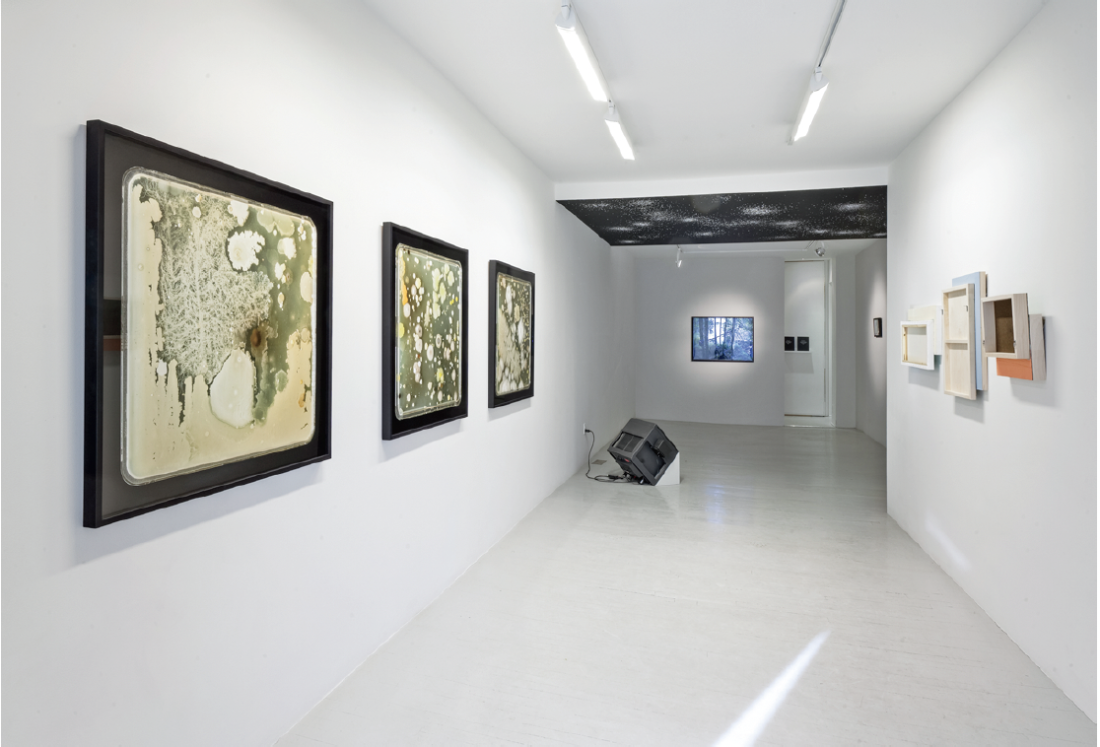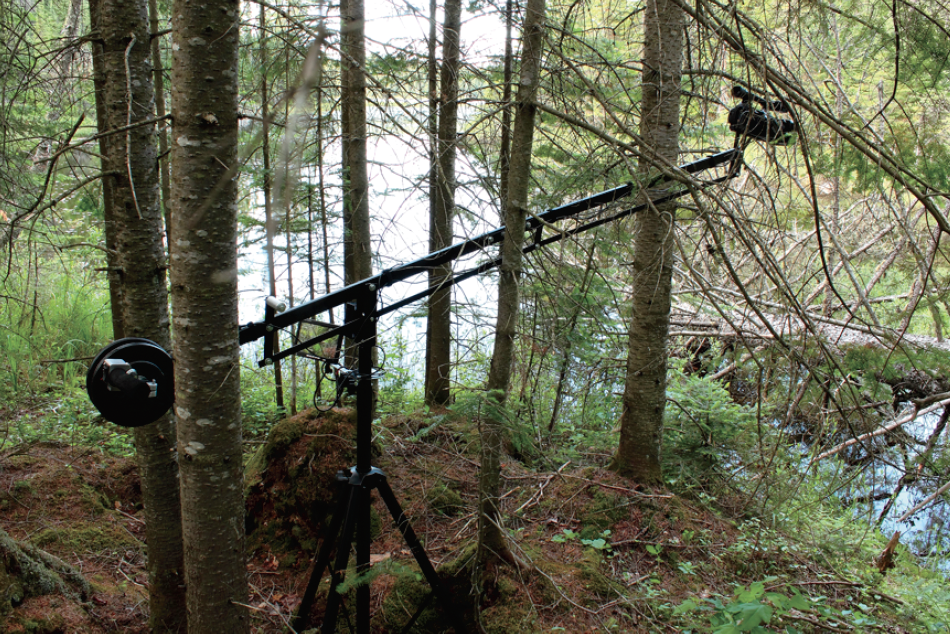Jon Sasaki
On view at Jessica Bradley Gallery on Dundas was a new body of work by Toronto-based artist Jon Sasaki, who opened his second solo show with the gallery this January. Following the success of his 2010 exhibition “Unabashed Optimism,” this untitled body of work continued in a vein now recognizable as the artist’s practice, combining conceptual strategies with a minimal but pointed sense of humour.
Opening the exhibition were three large digital prints that at first glance appeared to be breathtaking abstractions, but as with many of Sasaki’s works what is apparent should never be taken for granted. Reproduced in muted hues of taupe and laurel green were bacterial cultures spawned from the palettes of three of the Group of Seven painters. In this most recent encounter with the illustrious collective, Sasaki has taken swabs from the palettes of Tom Thomson, Frederick Varley and A J Casson and has produced from each an astoundingly uncanny, if not entirely accidental, likeness to the stylistic legacy of the Group. Framed by the Petri dish in which they had been cultivated and photographed on a black background, these embryonic portraits may very well have functioned as Rorschach tests, as each print bloomed in patterns of microbial growth evocative of the Group’s expressionistic style, giving the viewer leave to entertain associative interpretation.

“Jon Sasaki: Solo Exhibition,” installation view, Jessica Bradley Gallery, Toronto. Image courtesy the artist and Jessica Bradley Gallery. Photograph: Toni Hafkenscheid.
Perhaps the most uncanny of the triad, Microbes Swabbed From a Palette Used By Tom Thomson, 2013, most poignantly evoked the painter’s iconographic style—white crystalline lines etched the silhouette of barren tree forms, where an umber spot darkened the centre of the composition and could be taken as the sun in transit over the horizon. Though the palette swabs of Varley and Casson benefited less from the accidental happenstance of Sasaki’s experiment, each maintained a quality of fortuitous charm.
On the wall opposite the enigmatic palette swabs hung three paintings that are more sculptural than traditional paint on canvas, which Sasaki had purposefully titled “Supports.” Each work consisted of two like-materials (either wood, masonite or canvas), painted monochromatically and pressed together while still wet. Each of Sasaki’s supports was therefore composed of one of the three conventional materials used in painting—a witty strategy that points to the legacy of Conceptualism wherein the concept takes precedence over materiality.

Jon Sasaki, Northern River, 8’ Camera Crane, 2010, digital photo in LED lightbox, 71.2 x 106.7 cm. Image courtesy the artist and Jessica Bradley Gallery.
Installed in the centre of the gallery space was a monitor upon which a 39-minute video of Sasaki’s recent visit to Tasmania looped. Interactions, 2013, was installed in a somewhat awkward position but it seemed the installation of the video component did not face upward to capture the viewer’s attention, but rather to the ceiling (specifically to the installation We Are Made of Star Stuff, 2013), which had been painted matte black and sprayed with clots of hole-punched paper. In the video, a man’s hands traced the topography of a wooded ground, excavating the undersides of rocks embedded in the earth, sending colonies of ants running scared. Without a climactic end, Interactions focused more on the tedious physicality of discovery, leaving the viewer with a sense of the tedium as the video’s unseen protagonist (presumably Sasaki) continually mined the landscape without either success or failure. On the wall immediately adjacent hung Northern River, 8’ Camera Crane, 2011, which pictured the bulky camera that careens through the brush in a previous work, Jack Pine, 8’ Camera Crane, 2010, a video taken of Tom Thomson’s alleged Jack pine using a 360-degree crane shot. Though made earlier than other works in the exhibition, Northern River shared a decided similarity with them, demonstrating that it is the apparatus, the supports that are enlisted in creative endeavours, that Sasaki had chosen to foreground.
Finally, in a diminutive black frame, is a photograph of Sasaki’s signature brand of mischievous humour. Gallery Key Hidden Outside the Gallery, 2013, is documentation of a performance that pictured the bottom half of the gallery’s display window, and a rock, which sits curbside. Camouflaging itself using a “hiding in plain sight” strategy, the fake rock conceals within it the key to the front door of the gallery. It’s a cheeky invitation to the public, one that makes the arts administrator in me reel considering the potential consequences of such a brazen act—theft, loss, vandalism—to name a few. On the other hand, you could consider Sasaki’s offering a democratizing gesture, one that questions the art world’s reputation as an isolated community. He reminds us that all systems, whether natural, historical or social, are not impervious to intervention, and that they are the better for it. ❚
“Jon Sasaki: Solo Exhibition” was exhibited at Jessica Bradley Gallery, Toronto, from January 12 to March 16, 2013.
Amanda Brason is a Toronto-based writer and art critic.

